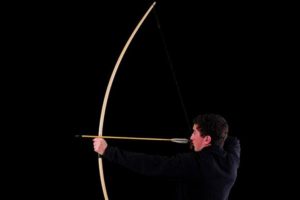Japanese Bow Vs English Longbow
Japanese Bow Vs English Longbow
Both the Japanese bow (Yumi) and the English Longbow are both “long” in that they are approximately 2 meters in length. Both bows would have been in use during the same periods in time. The asymmetrical Yumi is first mentioned in a Chinese historical manuscript from the 3rd century AD. It evolved gradually over time up until about the 17th century and the modern Yumi is unchanged from this time. English longbows came into widespread use after the Norman invasions of the 11th century AD. These bows are dominant from 1250–1450 AD and are a distinctive feature of English armies from this time.
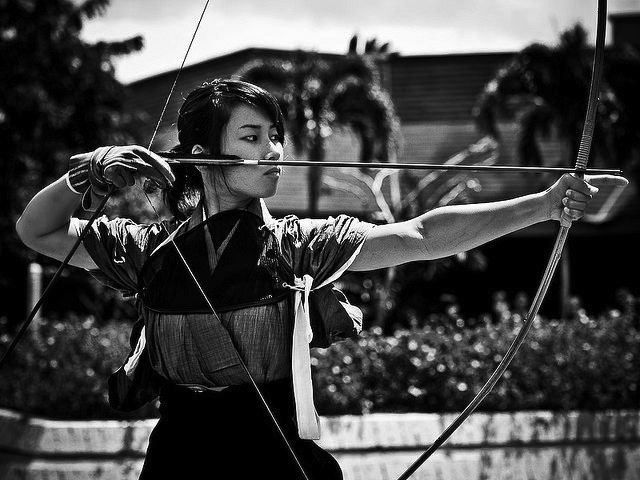
Japanese Bow Vs English Longbow: Materials & Construction
The English longbow and Japanese Yumi differ greatly in their materials and construction. An English longbow is a selfbow, comprised of a single stave of wood, typically Yew. The Japanese Yumi, on the other hand, incorporates several layers of wood and bamboo bound together.
Longbow:
A particular cross-section of the yew stave is selected and cut so that the inner heartwood becomes the belly and the outer sapwood becomes the back of the bow. The inner heartwood performs better under compression and the outer sapwood resists tension. This natural lamination enhances the performance of the bow. This is similar to how composite horse bows used by steppe nomads incorporate horn on the belly and sinew on the back of the bow. The left image below is a cross-section of yew wood and the desired section used for a longbow and the image on the right is a cross-section of a Mary Rose longbow.

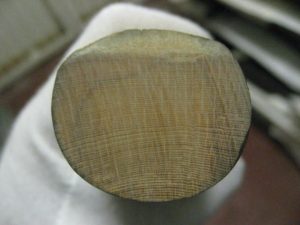
Yumi:
The Yumi evolved over time from a simple self bow to a more complex composite bow.
| Time Period | Type of Bow | Bow Formation |
|---|---|---|
| Prehistoric | Maruki | A single piece of wood |
| c.800-900 | Fusetake | Wood with bamboo front |
| c.1100 | Sanmaiuchi | Wood with bamboo front and back |
| c.1300–1400 | Shihochiku | Wood surrounded by bamboo |
| c.1550 | Sanbonhigo (Higoyumi) | Three-piece bamboo laminate core, wooden sides, bamboo front, and back |
| c.1600 | Yohonhigo (Higoyumi) | Four-piece bamboo laminate core, wooden sides, bamboo front, and back |
| c.1650 | Gohonhigo (Higoyumi) | Five-piece bamboo (or bamboo and wood) laminate core, wooden sides, bamboo front and back |
| c.1971-Modern times | Glass fiber | Wooden laminate core, FRP front, and back |
Here is an illustration of the cross-section of a Yumi:
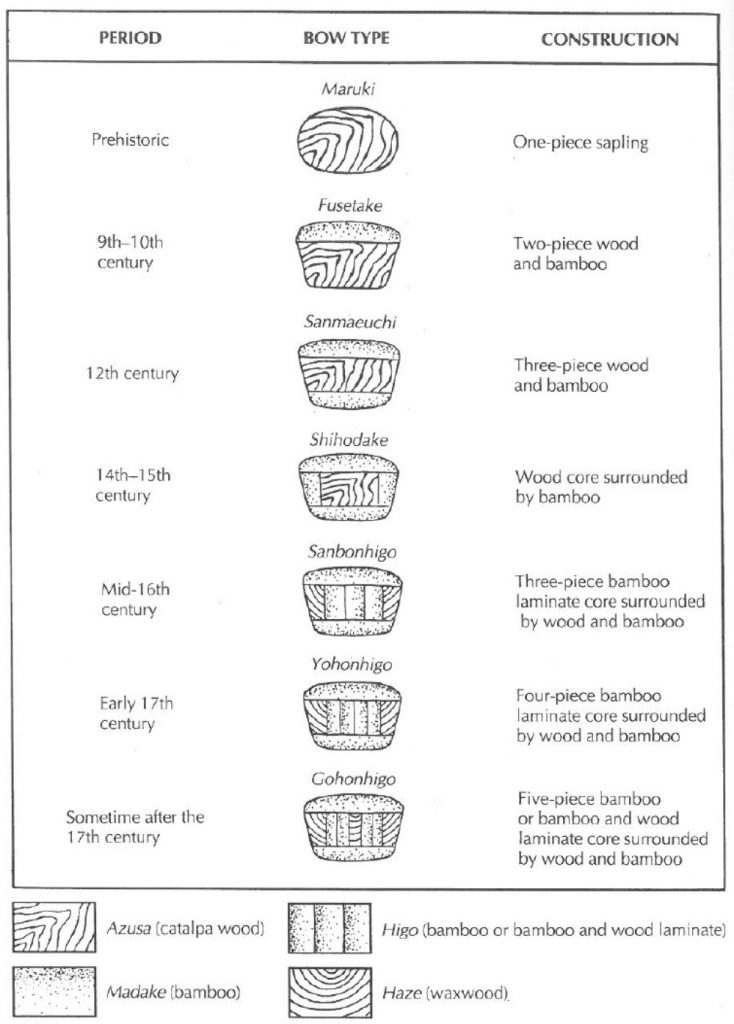
As you can see the Yumi started out as a simple self bow, likely similar to an English longbow, and gradually evolved more layers and complexity over time.
The English longbow’s final shape is sculpted by shaving off the desired amount of wood until the final shape is established.
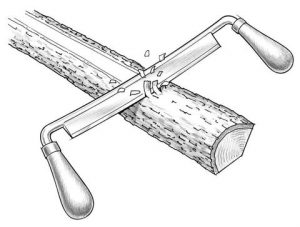
A Yumi, on the other hand, requires the laminations to be glued and held into place while the bond is made. The binding and shaping of the bow are done by wrapping the bow in rope and hammering bamboo strips in between the bow and the rope in order to shape the bow.
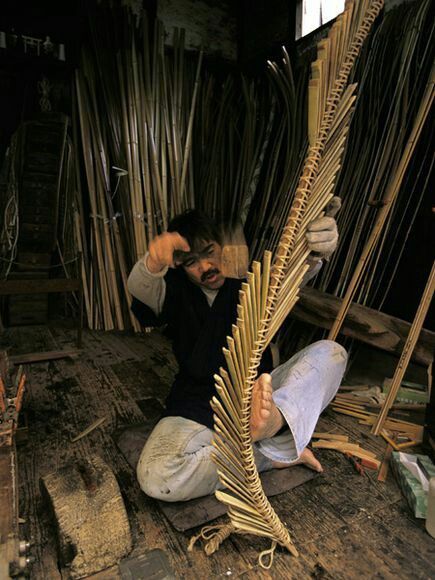
Japanese Bow Vs English Longbow: Usage
The English longbow was an infantry weapon used on foot. The Japanese Yumi was at first a cavalry weapon. Although they are remembered for their swordsmanship, the early samurai were mounted troops whose primary instrument was the bow and arrow. Traditional Japanese archery is known as Kyūdō while traditional Japanese mounted archery is known as Yabusame.
The English Longbow was a very common weapon used by the masses. Archery practice was mandatory in Tudor times and a high degree of skill in archery was acquired by the common folk. In Japan, archery, as well as other matters of warfare and martial arts, was the realm of a special warrior elite, the infamous samurai.
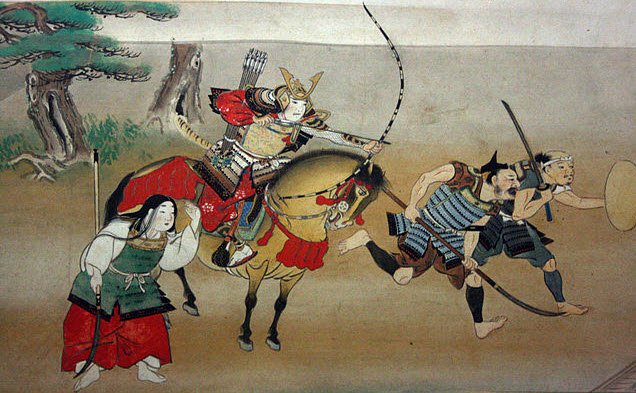
Draw Weights
It is known that the draw weights of the English war bows were in excess of 100 pounds. The Yumi can also be made to the same poundages as the longbow, and it would be safe to assume that there were very heavy Yumi’s made for warfare that was in excess of 100 pounds as well. In today’s Kyūdō the bows are typically in the 30 to the 40-pound range because armor penetration and lethality are no longer a major concern.
Dimensions
The English longbows recovered from the Mary Rose had an average length of 1.98 meters.

The Yumi is about the same size, ranging from approximately 2 to 2.5 meters in length. It’s overall shape and curves are more intricate than that of an English longbow.
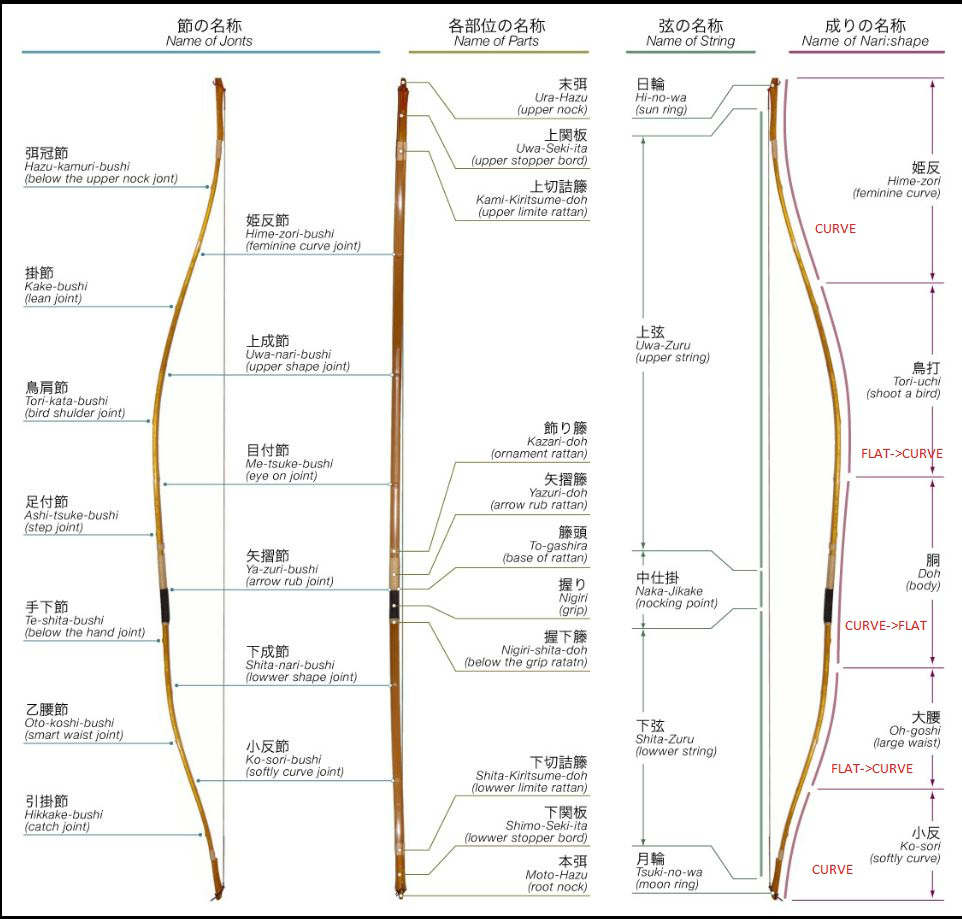
Check out this video for more on the Japanese Bow Vs English Longbow:
Buy A Longbow or Yumi! Click Images!
